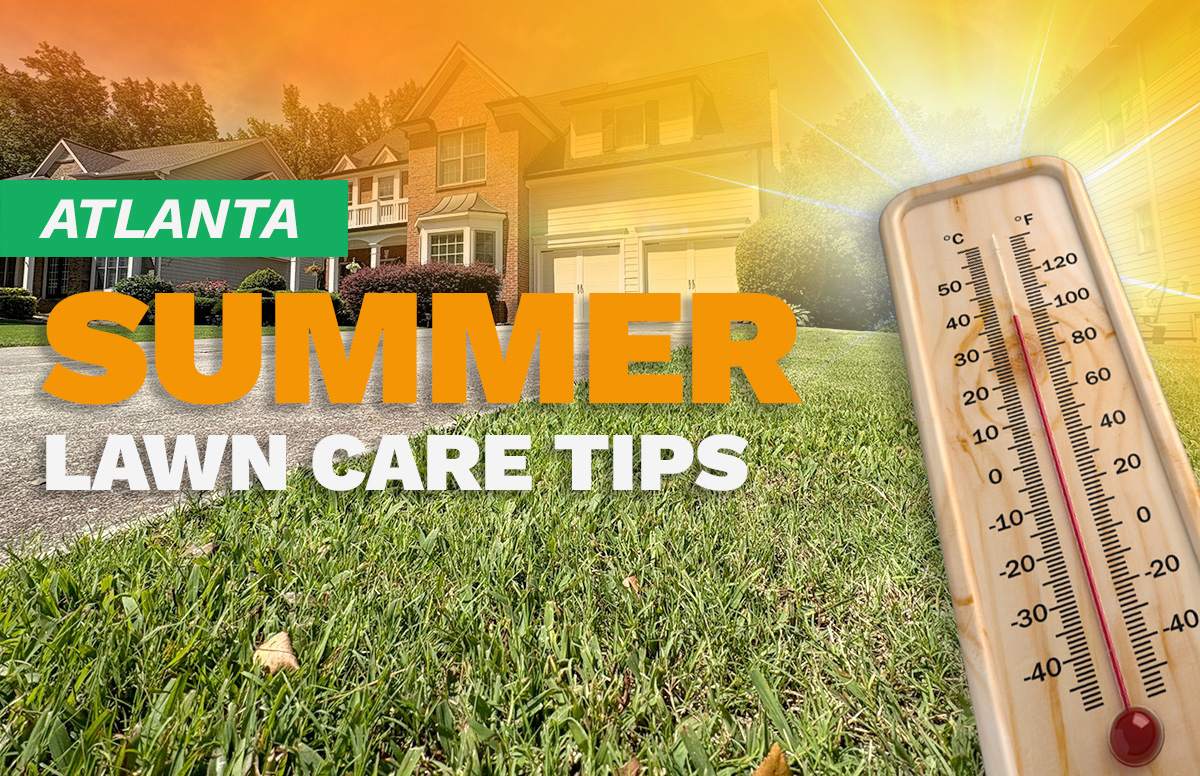
Summer here in Atlanta, Georgia, brings hot days that can turn dry by August, testing plants’ resilience and homeowners’ care. Proper maintenance is vital, so start implementing these tips for effective summer lawn care.
- 1. Watering is the No. 1 Lawn Care Task for Summer
- 2. Mow Taller to Protect Lawns From Heat
- 3. Aerate the Lawn to Breathe Easier in the Summer
- 4. Fertilize Warm-Season Grasses
- 5. Leave Grass Clippings on the Lawn
- 6. Keep Summer Weeds Under Control
- 7. Manage Summer Lawn Pests
- 8. Prevent Summer Lawn Diseases
- 9. Overseed in Early Summer
- FAQ About Summer Lawn Care in Atlanta
1. Watering is the No. 1 Atlanta Lawn Care Task for Summer
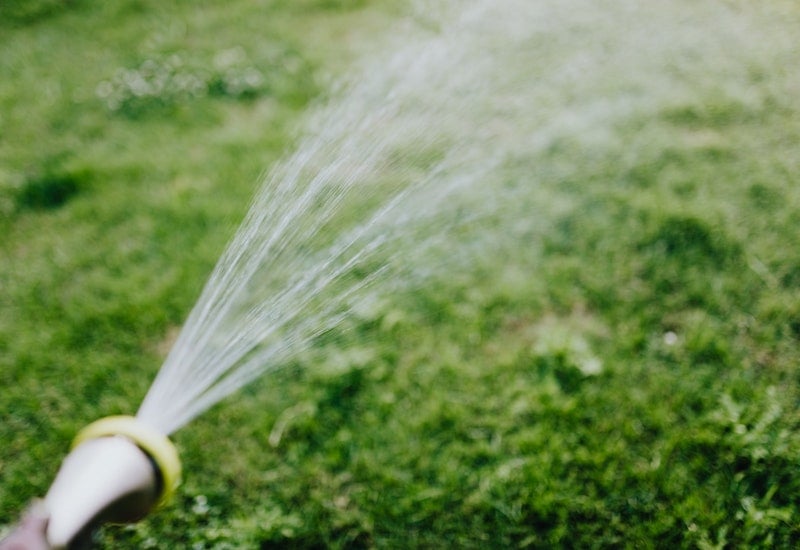
The best summer lawn care tip for Atlanta homeowners is to water your lawn on a regular basis. Your grass type will dictate how often and how much you need to water your lawn.
For instance, Bermuda, Zoysia, and other warm-season grasses need 1 inch of water per week while actively growing. Once the grass is tall enough for the first mowing of the season, it should be resilient enough to face some drought.
Tall fescue, though, needs 1 inch per week all summer to survive the Atlanta heat, regardless of how tall it grows.
The best time to water your lawn is in the morning. If you water with a hose or a manual sprinkler system, schedule it between 8 and 10 a.m.
For homeowners with an automated system, set it to spread water from 3 to 7 a.m.
This allows time for the soil to absorb water before the midday heat when the sun evaporates excess moisture.
Avoid evening watering, which could lead to fungal disease.
LawnStarter Pro Tip from Shon Matthews of Unique Kuts of Fayetteville: Get a sprinkler and put it on a timer so as to not over- or under-water the grass.
LawnStarter Pro Tip from Ethan Wright of Wright’s Lawn Care in Powder Springs: Use deep, infrequent watering. I water my lawn about 1 inch per week.
See Related:
– Best Time to Water Your Grass in Hot Weather
– How Often to Water Grass in Summer
2. Mow Taller to Protect Atlanta Lawns From Heat
During summer, mow the lawn a half-inch taller to improve its resistance to high temperatures and drought. Taller grass will also limit weed development.
Here’s how tall you should mow the grass during summer in the Metro Atlanta area, depending on the type of grass in your yard:
| Type of Grass | Standard Height | Summer Mowing Height |
| Bermuda | 1-2 inches | 1.5-2.5 inches |
| Centipedegrass | 1-2 inches | 1.5-2.5 inches |
| St. Augustinegrass | 2.5-3 inches | 3-3.5 inches |
| Zoysia | 1-2.5 inches | 1.5-3 inches |
| Tall fescue | 2-4 inches | 2.5-4.5 inches |
Bermudagrass, Zoysia, and St. Augustinegrass grow fast during summer, so you may need to mow more than once a week.
When lawn mowing, keep in mind these simple rules:
- Mow the lawn often enough to take out only ⅓ of the grass height each time. This promotes a fast recovery and makes it less vulnerable to heat and lawn diseases.
- Trim the grass in the morning, so it has time to heal and recover before sunset.
- Don’t mow during drought, which could lead to stress and slower recovery.
- Keep the mower blades sharp. With clean cuts, the grass heals faster and is less prone to diseases.
See Related:
– What is the One-Third Rule for Cutting Grass?
– How to Sharpen Mower Blades
– How Often Should You Sharpen Lawn Mower Blades?
3. Aerate the Lawn to Breathe Easier in the Summer

For access to air, water, and nutrients, use a core aerator to drill small holes around the yard to allow oxygen, water, and fertilizers to easily access the root system.
“Make sure that it can breathe,” which means aeration, is what Atlanta Lawnstarter Pro Macon Ramsey of Mr. Lawn Service says is the secret to a perfect lawn.
Lawn aeration:
- Prevents water puddles that could lead to fungal diseases.
- Ensures fertilizers efficiently reach the roots.
- Helps grasses quickly and deeply absorb water.
- Encourages new grass to develop faster, easier, and healthier (if overseeding).
But aeration takes time and expense – renting an aerator can cost a little over $100 a day from Home Depot.
Maybe a better option? Just hire LawnStarter to aerate your lawn for you. It’s easy to request a Manual Quote for Aeration in our app, online, or by calling Customer Service.
See Related:
– What is Aeration? (Video)
– Benefits of Aerating Your Lawn
– How to Aerate a Lawn
4. Fertilize Warm-Season Grasses

Starting in May, warm-season grasses start growing fast and need nutrients throughout the summer months. Nitrogen is essential for grass blade growth, while potassium and phosphorus are needed for root development and good resistance to drought and diseases.
There are 2 ways you can provide these nutrients:
- Synthetic Fertilizer: If you choose a synthetic fertilizer, go for a slow-release, granular product. It will feed the grass closer to its natural growth pace, prevent overgrowth, and reduce mowing needs.
- Organic Fertilizer: If you prefer organic fertilizer, these are less prone to leaching and runoff and feed the soil’s beneficial microorganisms. They also need soil microbes to break down the nutrients, so they’ll feed the grass gradually, close to the natural pace of the plant.
Pro summer fertilization tips:
- Don’t fertilize tall fescue in the summer. It forces growth and makes this cool-season grass vulnerable to heat and drought.
- Avoid fertilizing the lawn during a drought or while the grass is dehydrated, as it can stress the plants.
See Related:
– Organic vs. Synthetic Fertilizer: What’s the Difference?
– Slow-Release vs. Quick-Release Fertilizer
– How to Choose the Right Fertilizer
5. Leave Grass Clippings on the Lawn
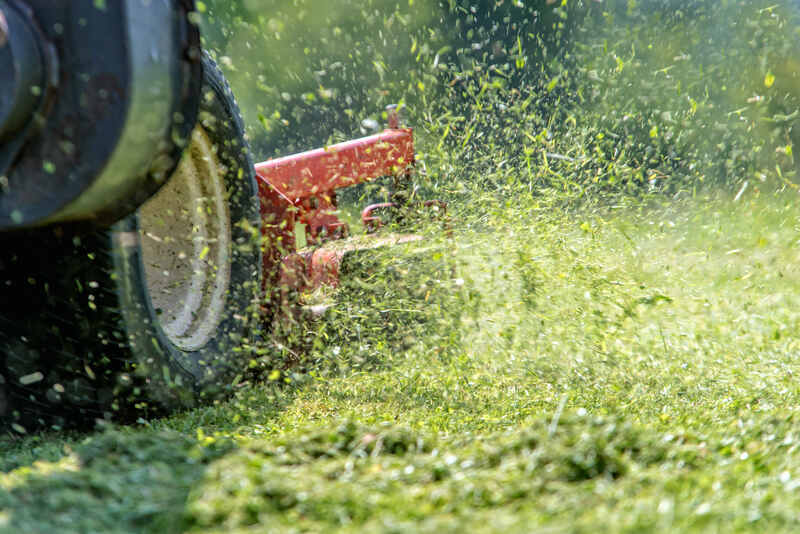
When grass clippings are cut thin and left on the lawn, they retain moisture in the soil and keep the ground cooler during summer.
Clippings from Bermuda, Zoysia, and other warm-season grasses are also a good source of mulch for the rest of the yard. Cut the clippings small, and spread them in flower beds and veggie gardens.
Pro Tip: Don’t use grass clippings as mulch if you spread herbicides or pesticides around the lawn.
See Related:
– What is Grasscycling?
– Reasons to Use Grass Clippings as Mulch
– How Does a Mulching Mower Work?
6. Keep Summer Weeds Under Control
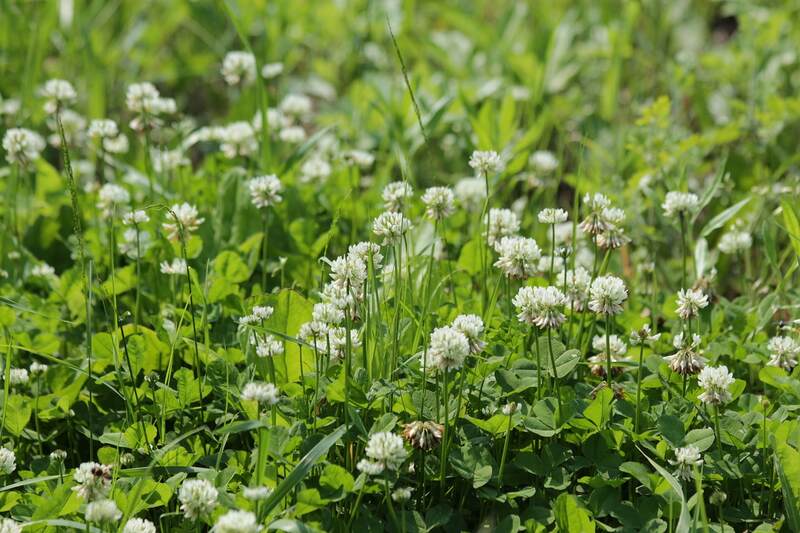
If you are on track with your spring lawn care schedule and have already spread pre-emergent weed control products, your lawn should be partially protected from summer weeds like:
- Clover
- Yellow nutsedge
- Crabgrass
- Annual bluegrass, also known as Poa annua
If not, you’ll need to consider applying post-emergent herbicides to kill the weeds once they grow. Or, hand-pull them if there are just a few.
With turfgrass active on your lawn, use only selective herbicides and spot spray them to avoid harming the grass. Not sure about the right product? Order professional lawn treatments in Atlanta from LawnStarter to take care of the weeds.
See Related:
– How to Get Rid of Clover and Not Kill Grass
– How to Get Rid of Nutsedge
– How to Get Rid of Crabgrass
7. Manage Atlanta’s Summer Lawn Pests
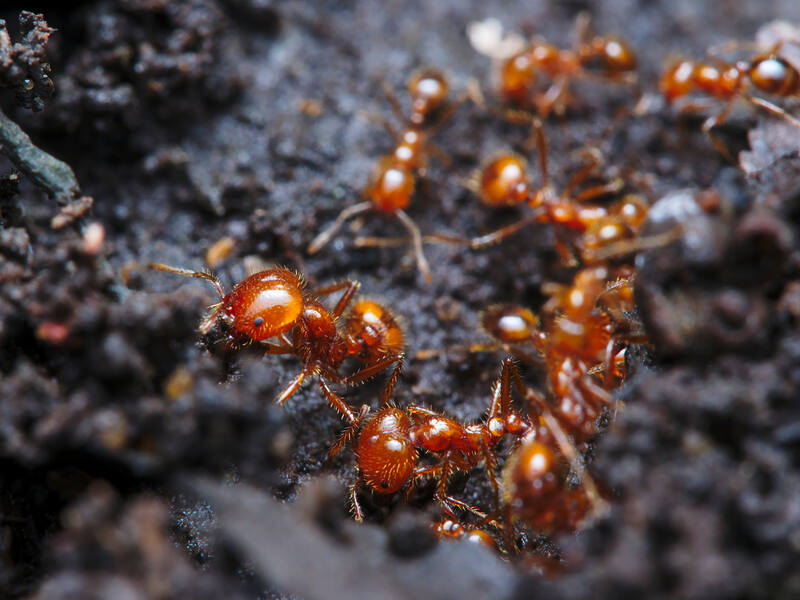
The most common lawn pests to watch out for in Atlanta during summer are:
- Fire ants
- Armyworms
- Spittlebugs
Fire ants build unsightly mounds in your lawn, destroying grass roots, but can be quickly treated with a pest control product from your local home and garden retailer.
Armyworms are caterpillar-like pests that enjoy Bermudagrass and fescue. Brown spots and flocks of birds raiding your yard give away their presence. If you see these, call for lawn pest control immediately as armyworms can destroy your lawn in days.
Spittlebugs feed on grass, which then wilts and dies. When you see damaged grass spots 2 to 4 inches large, that means these pests are on your lawn. You can treat them with the appropriate pest control product at your local home and garden store.
See Related:
– How to Get Rid of Armyworms
– How to Get Rid of Spittlebugs
– How to Get Rid of Fire Ants
8. Prevent Summer Lawn Diseases in Atlanta

To prevent fungal lawn diseases, routinely check your lawn for signs of sickness. The most common Atlanta lawn diseases you might deal with are:
- Fairy ring
- Gray leaf spot
- Leaf spot/Melting out
- Pythium blight
- Pythium root rot
- Take-all root rot
See Related: Common Lawn Diseases and How to Spot Them
To reduce your lawn disease risk:
- Aerate properly and remove thick thatch.
- Mow at the correct height.
- Water only as needed and never in the evening.
Treating lawn diseases involves applying a proper fungicide. Since some lawn diseases can be aggressive, LawnStarter offers lawn treatments in Atlanta to resolve these issues.
See Related:
– Gray Leaf Spot: How to Identify, Control, and Prevent It
– Pythium Blight: How to Identify and Control It
– Take-All Root Rot: How to Identify and Prevent It
9. Overseed in Early Summer
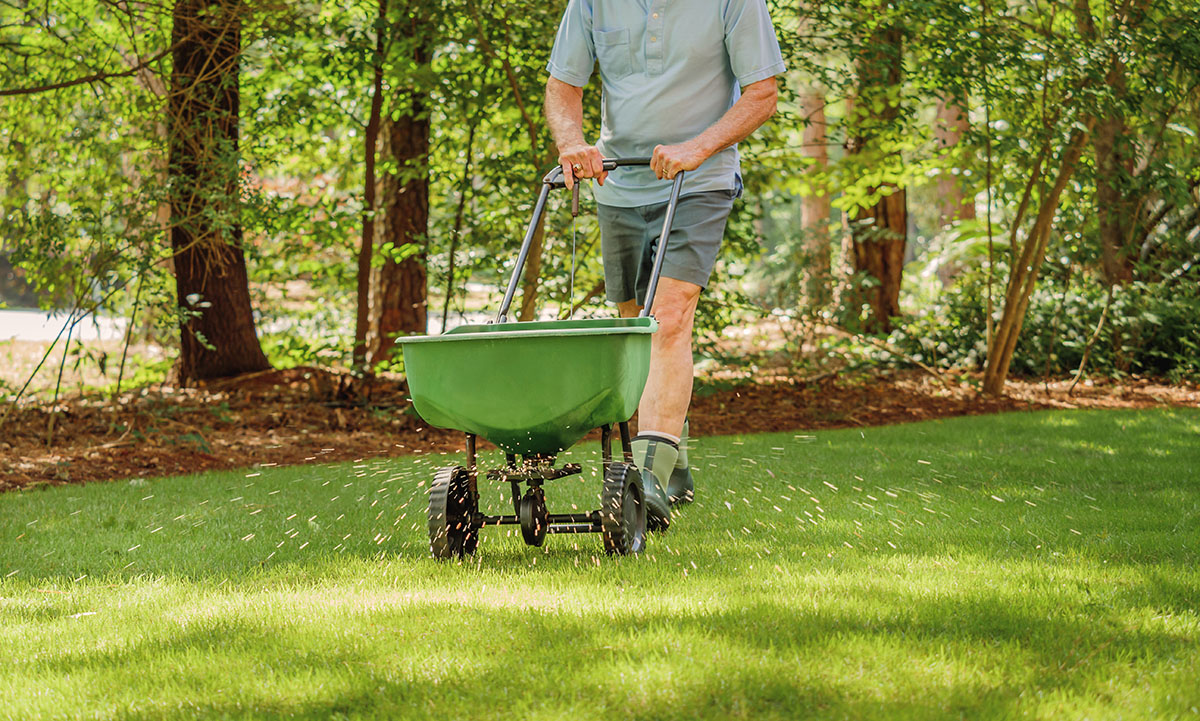
Overseeding is a smart way to keep your lawn dense and more resistant to drought, heat, and weeds. Consider seeding in early summer for warm-season grasses such as Bermuda or centipede.
If you need to overseed tall fescue or other cool-season grasses, include it as a task in your fall lawn care schedule. The cooler weather will allow new seedlings to develop healthier and grow enough to have good resistance to heat the following summer.
See Related:
– How to Overseed Your Lawn in 8 Simple Steps
– 5 Clear Signs You Need to Overseed Your Lawn
FAQ About Summer Lawn Care in Atlanta
Early summer, when warm-season grasses start growing in the Metro Atlanta area, spread a slow-release, nitrogen-rich fertilizer for leaf growth with potassium to support root development.
The best time to fertilize a lawn in Atlanta is July for Bermuda and August for Zoysia. Optionally, you can make a second spread in June or August for the Bermuda Tifway type and June for the Bermuda Tifgrand cultivar and Zoysiagrass.
Water once a week, about 1 inch, but subtract rainfall from this amount. Irrigate deeply to promote root growth.
Enjoy a Green Atlanta Lawn All Summer
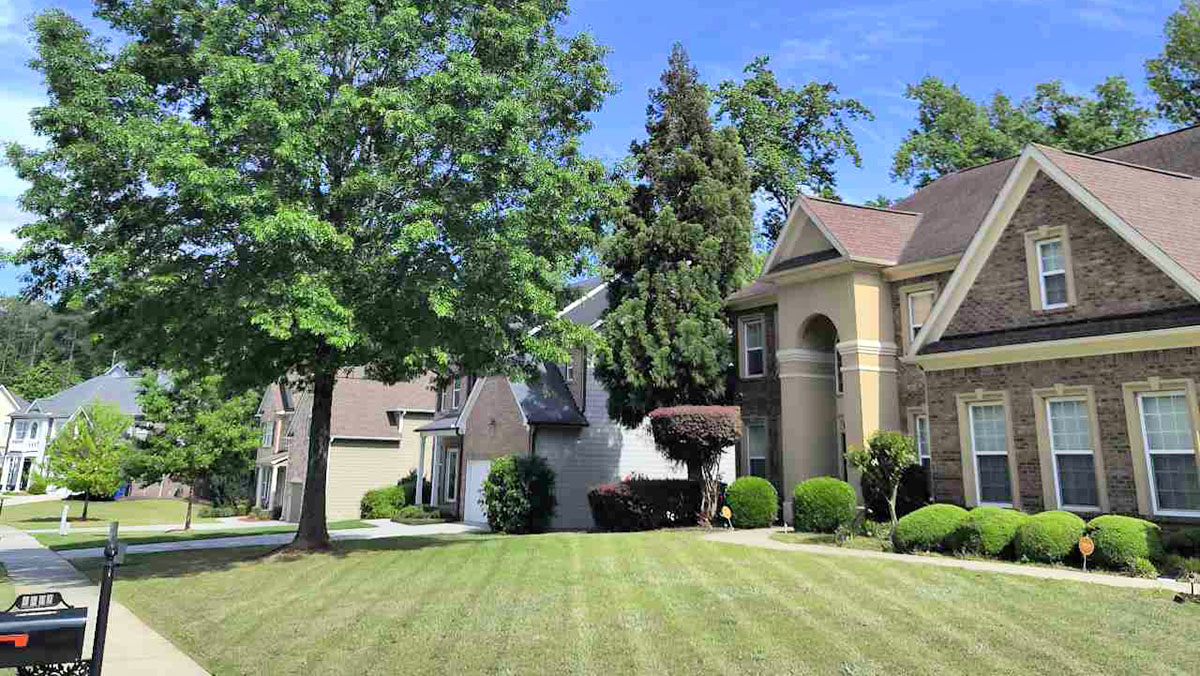
Keeping your lawn watered, mowed, and pest-free requires regular maintenance. Hire one of LawnStarter’s Atlanta lawn care pros, and enjoy a healthy green lawn all summer.
Read Next:
– 8 Tips for Maintaining Your Atlanta Lawn
–7 Crucial Winter Lawn Care Tips for Atlanta
Main Image: A home in Atlanta with a freshly mowed lawn is pictured in summer. Illustration by Whitney Lehnecker / LawnStarter; Photo by Natalia Pedroza / LawnStarter